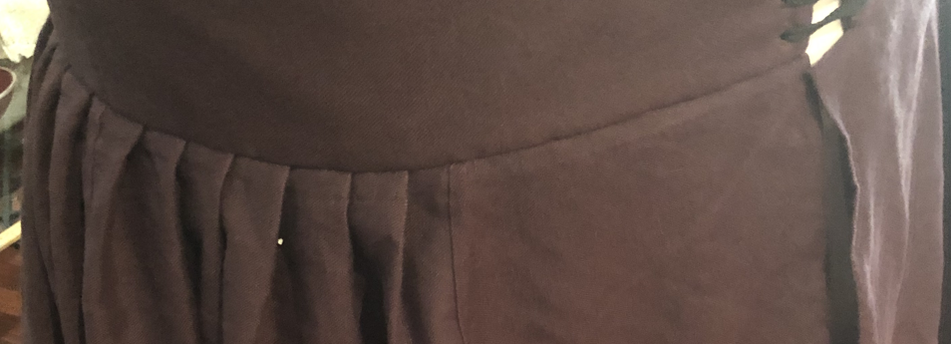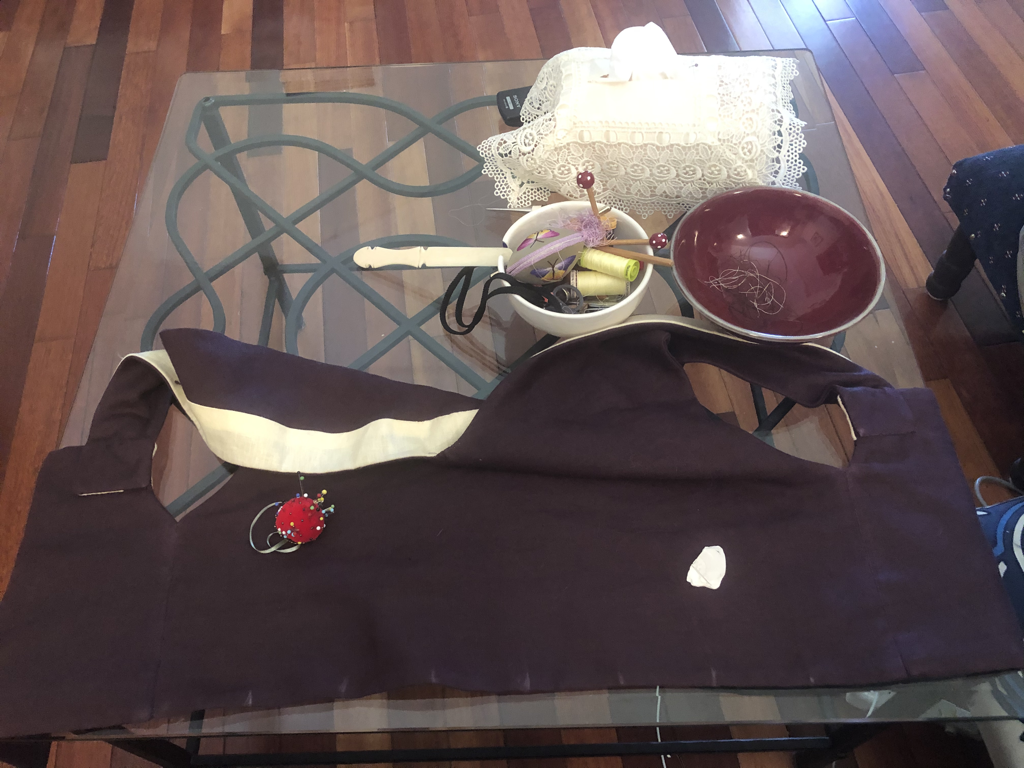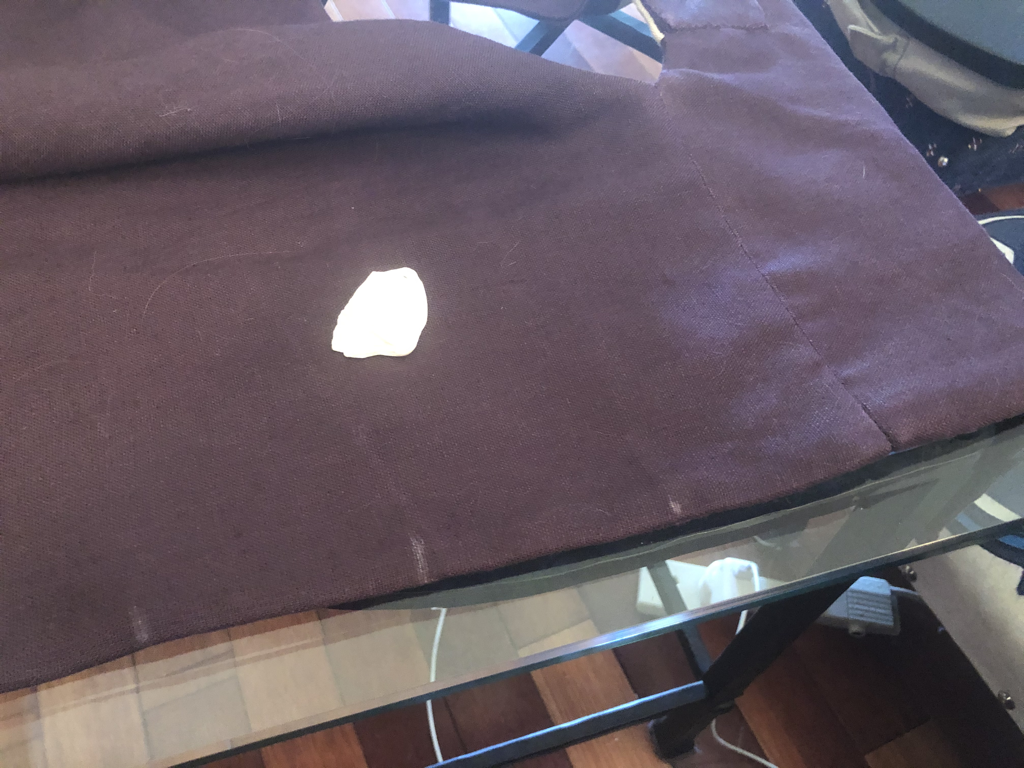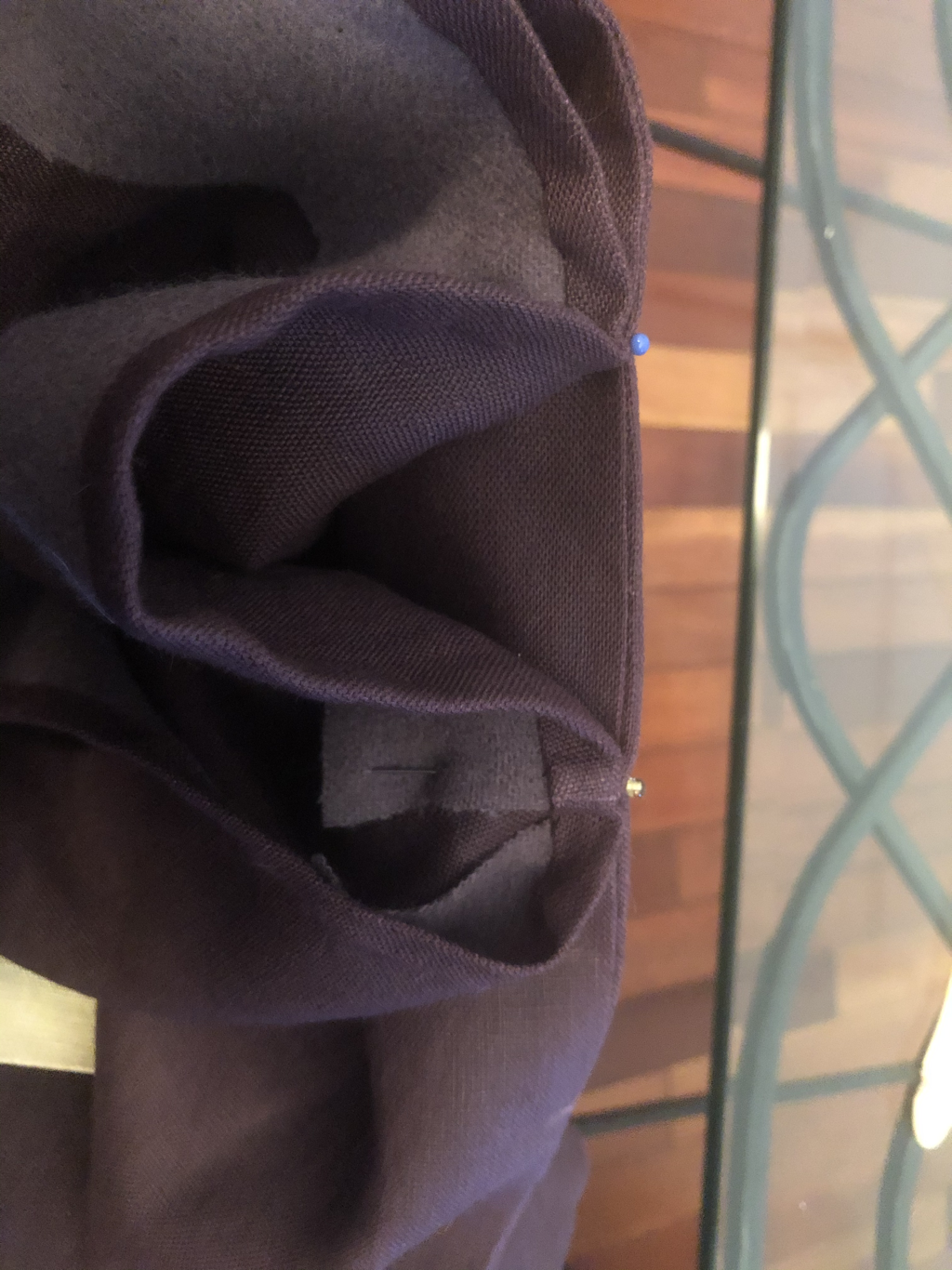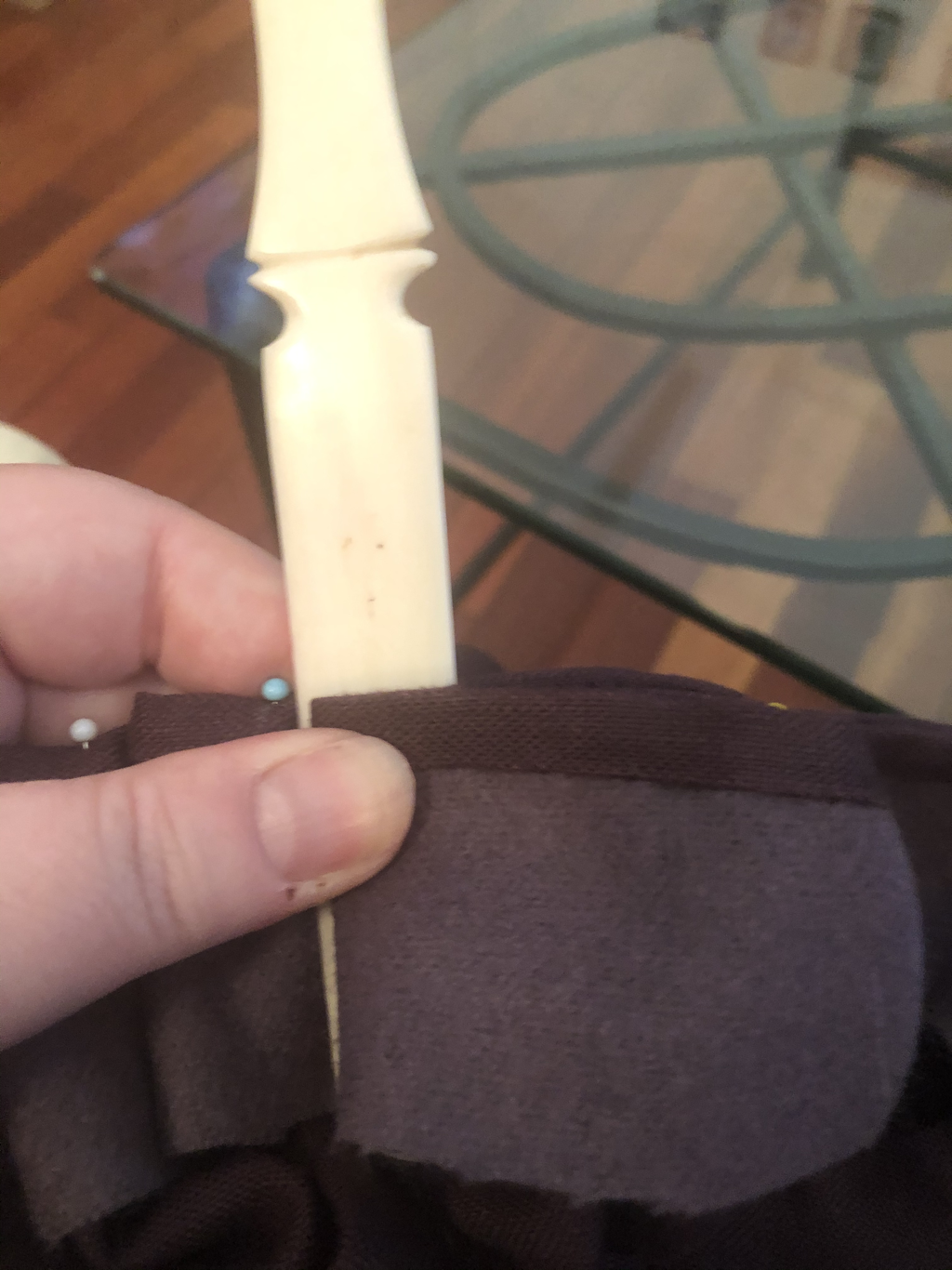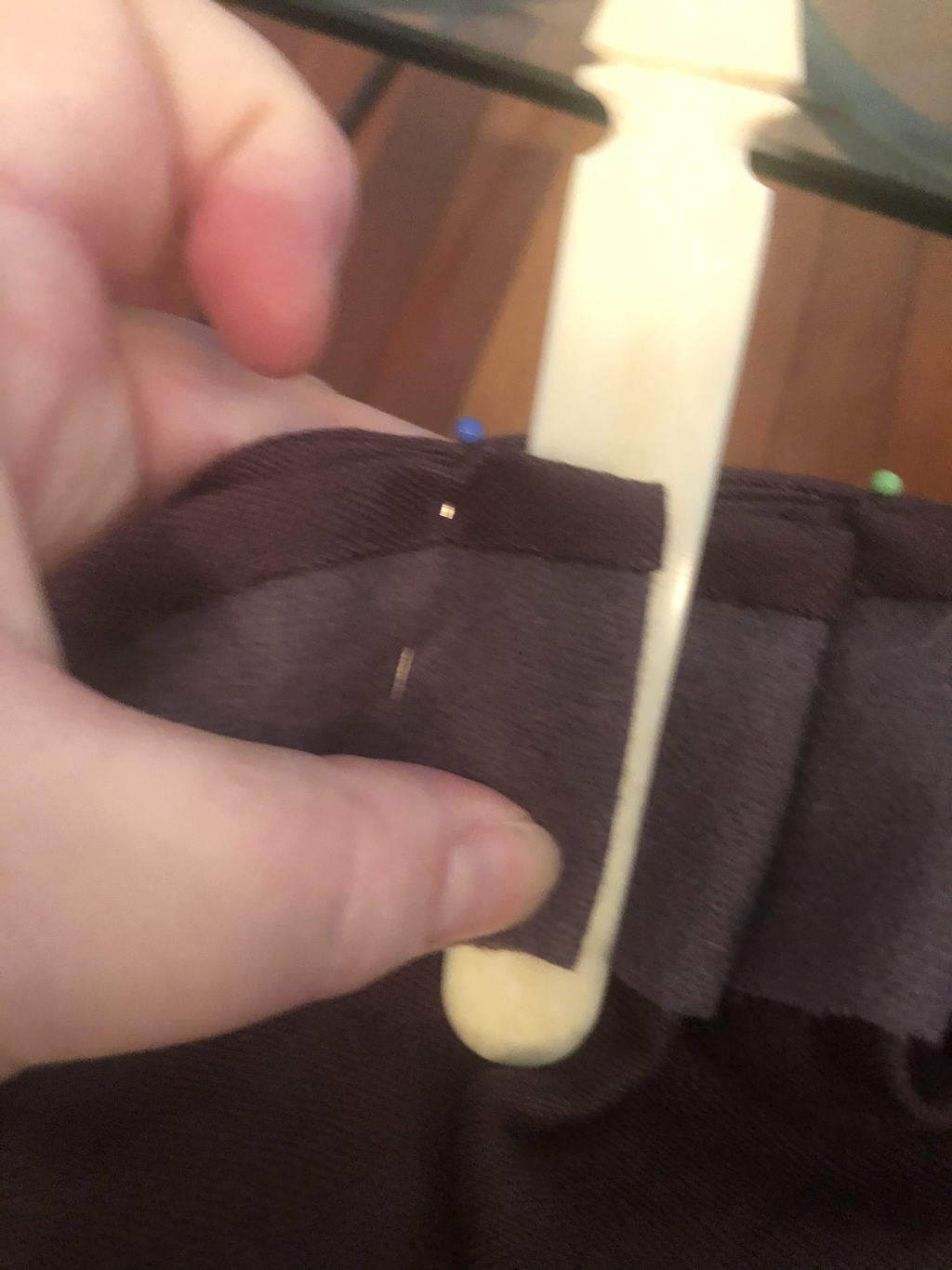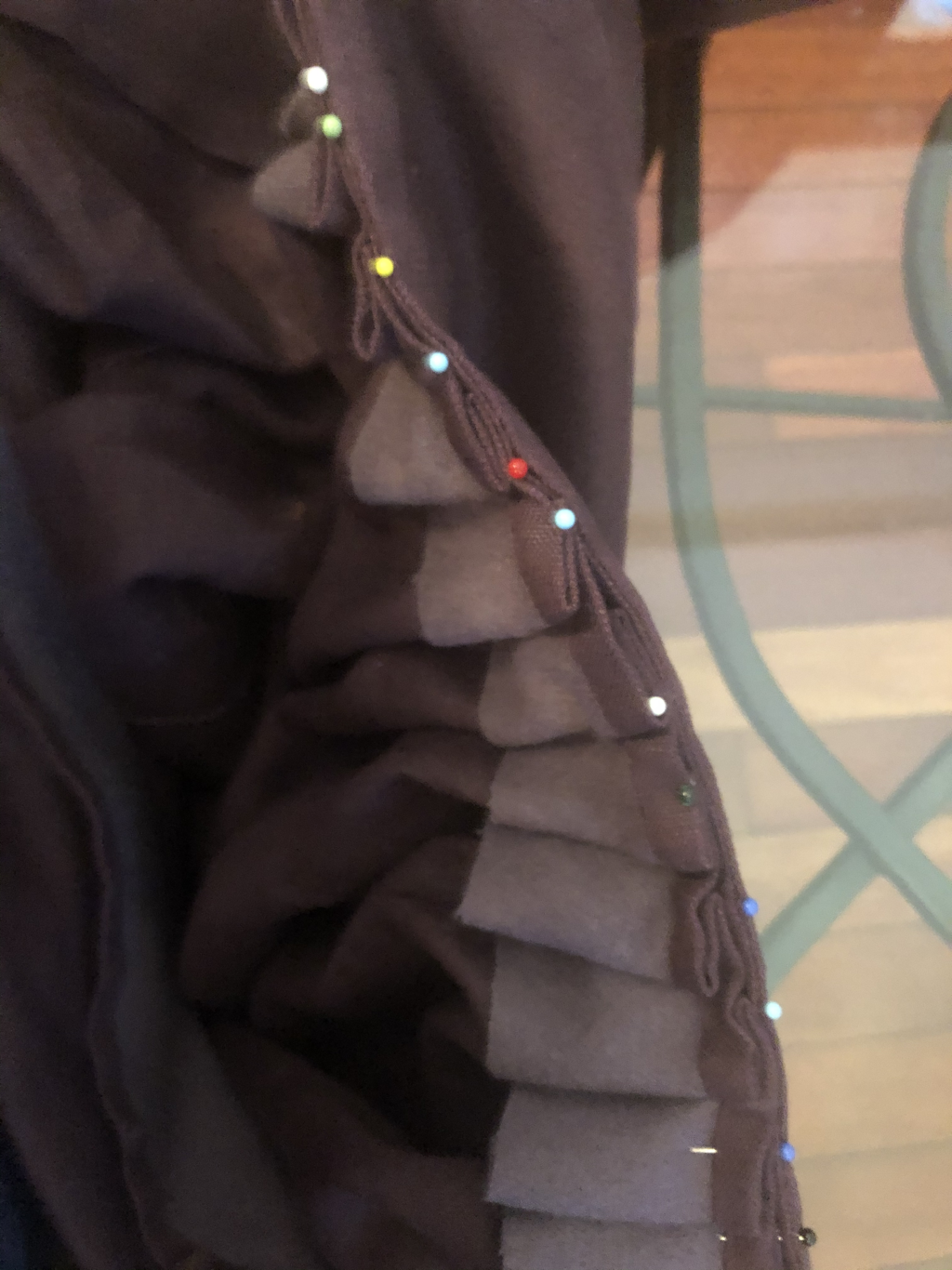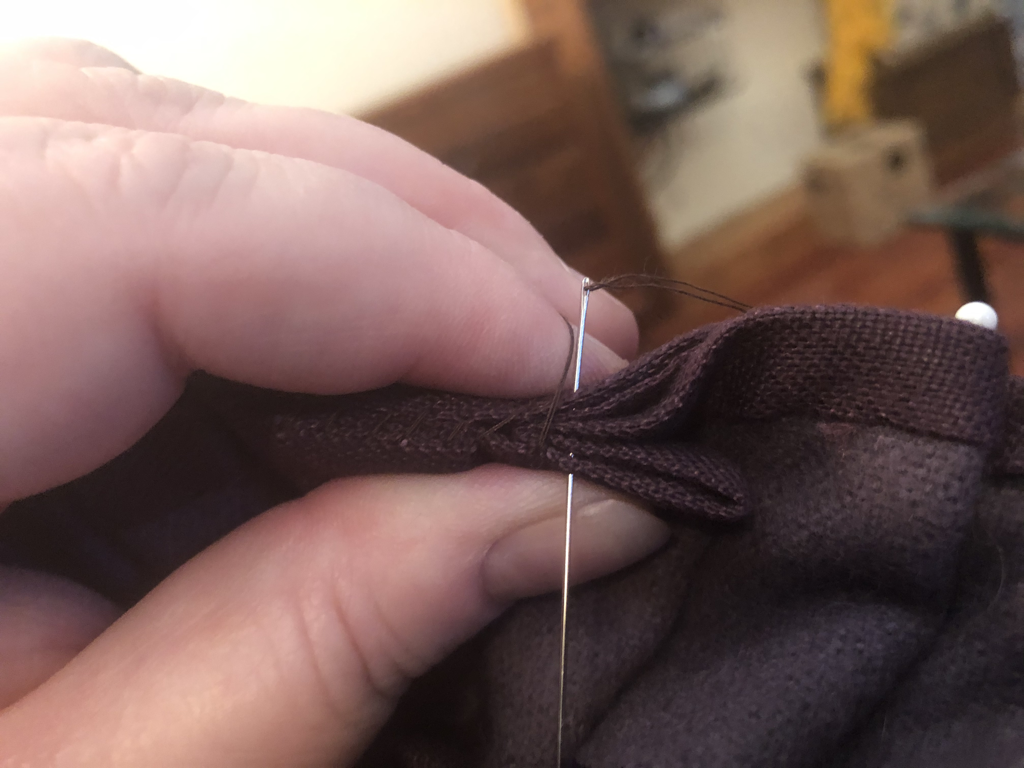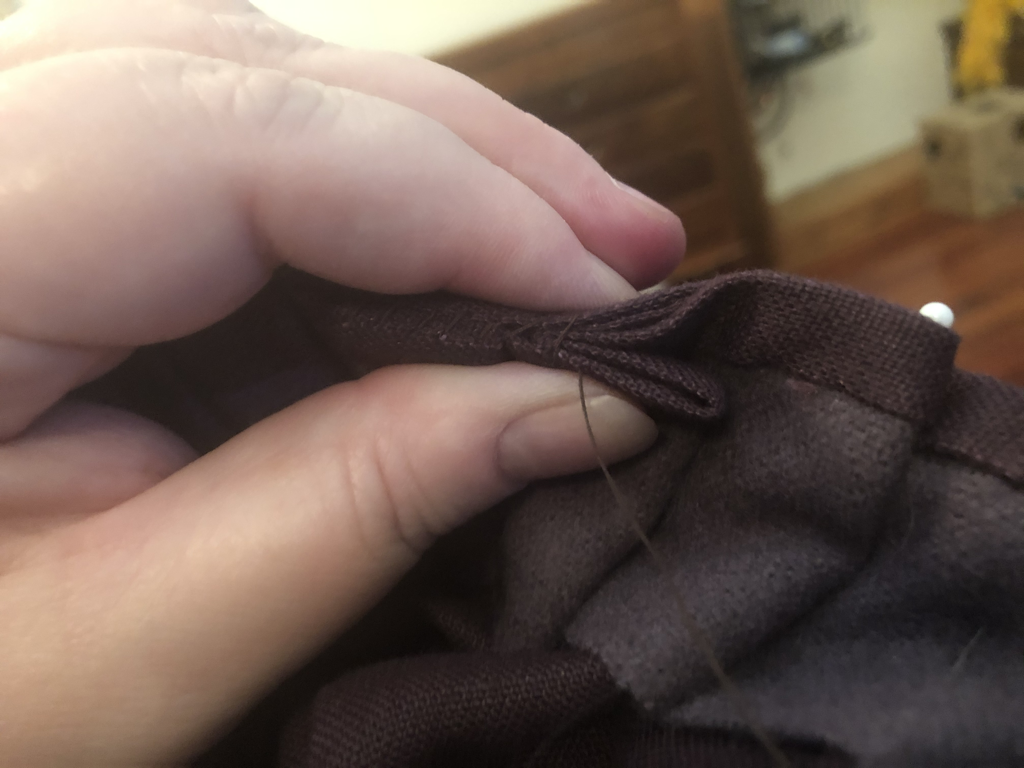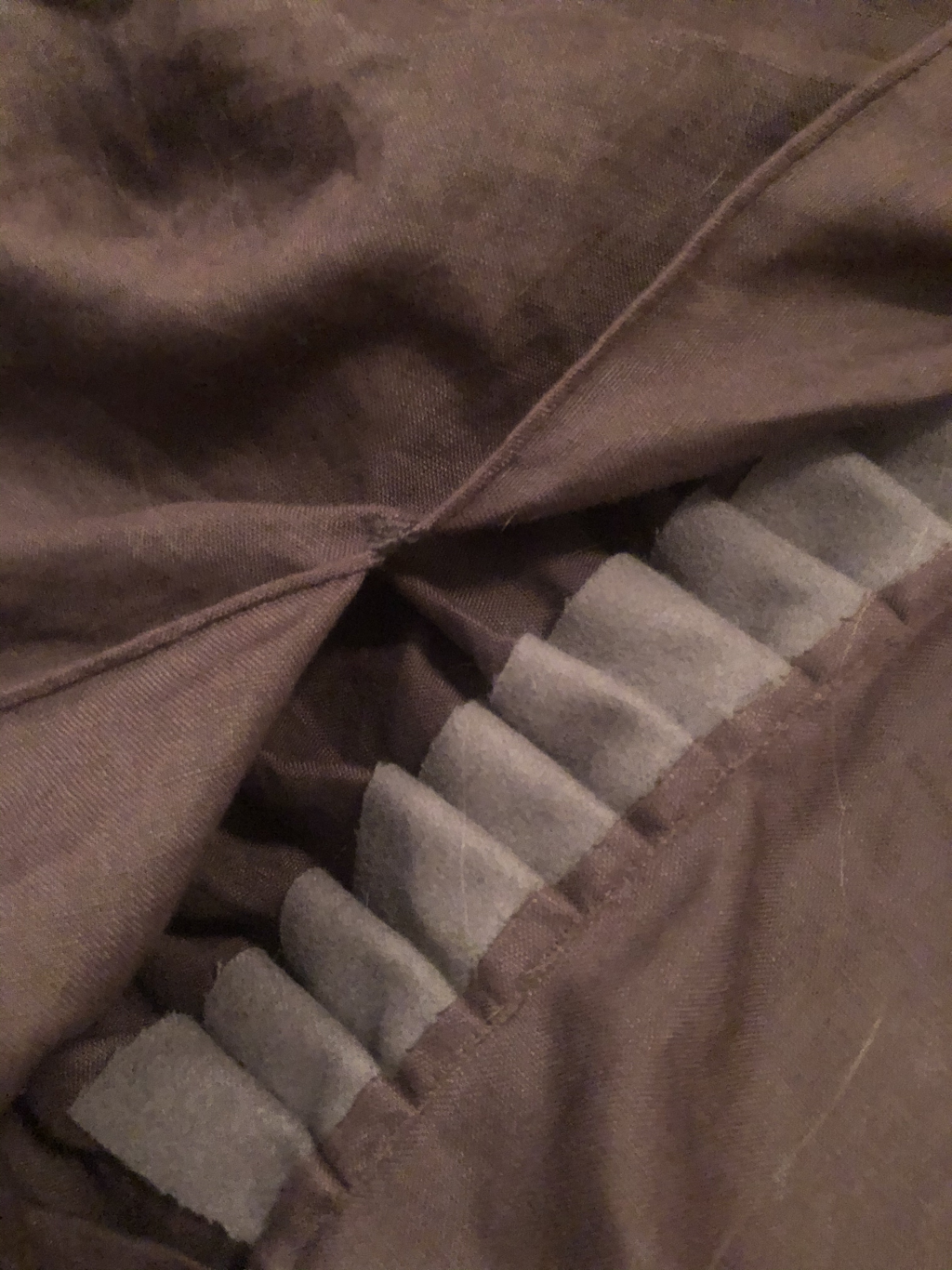A step-by-step guide in pictures and wordsOne of the most befuddling parts of kirtle construction, can be attaching the skirt to the bodice. It took me a long time to develop a reliable technique that is easy to use. In this demonstration, I am sewing a middle class Elizabethan kirtle. Step 1: Establish how the garment should be pleated Check with your source material to find out how big the pleats should be for your garment.
You should always line up the side seam of the skirt to the side seam of the bodice. In fact, I always treat the front and back of the garment separately and apply the technique first to the back and then to the front. Step 2: Assemble your materials
Step 3: Mark out your bodice and skirt.
Step 4: Line up your marks
Step 5: Measure your pleats
Step 6: Pin your pleats.
Step 7: Sew the bodice to the skirt
Step 8: Finish the garment
Author: Nicola de Coventre (nee Nicola Boyd). Images and text copyright March 2020.
0 Comments
Leave a Reply. |
Dr. Nicola BoydI have been creating historical clothing for over twenty years, but in the last decade, since I joined the SCA, that I have gained confidence in my research and practice. ArchivesCategories
|
